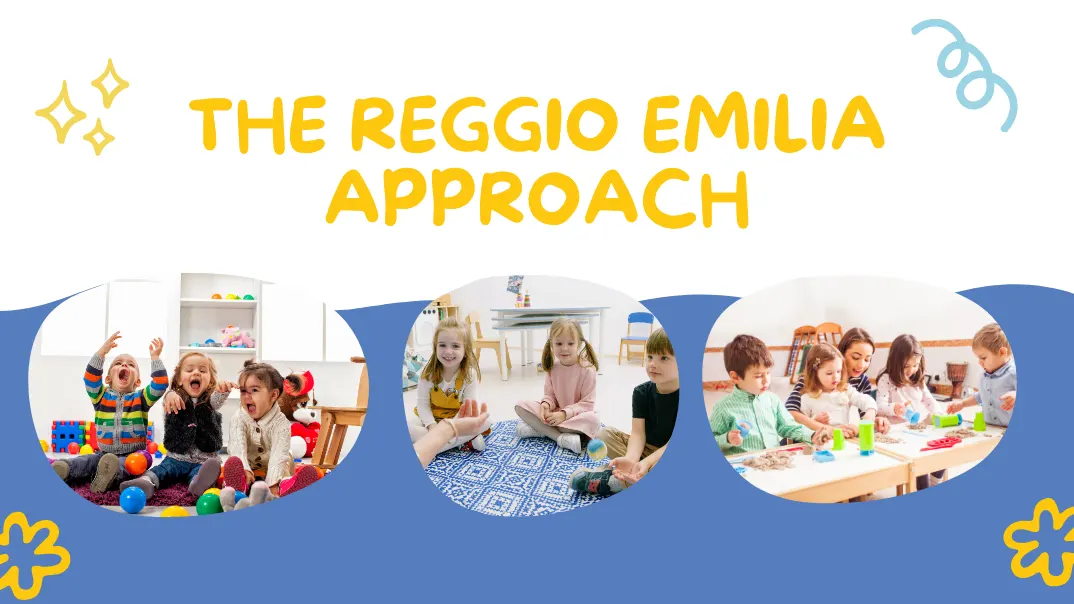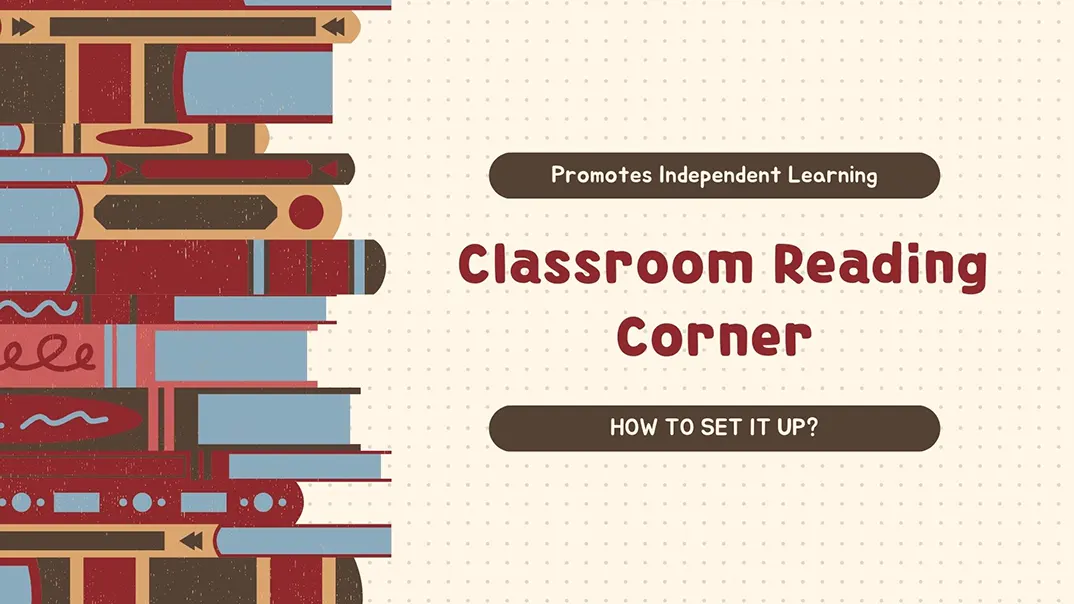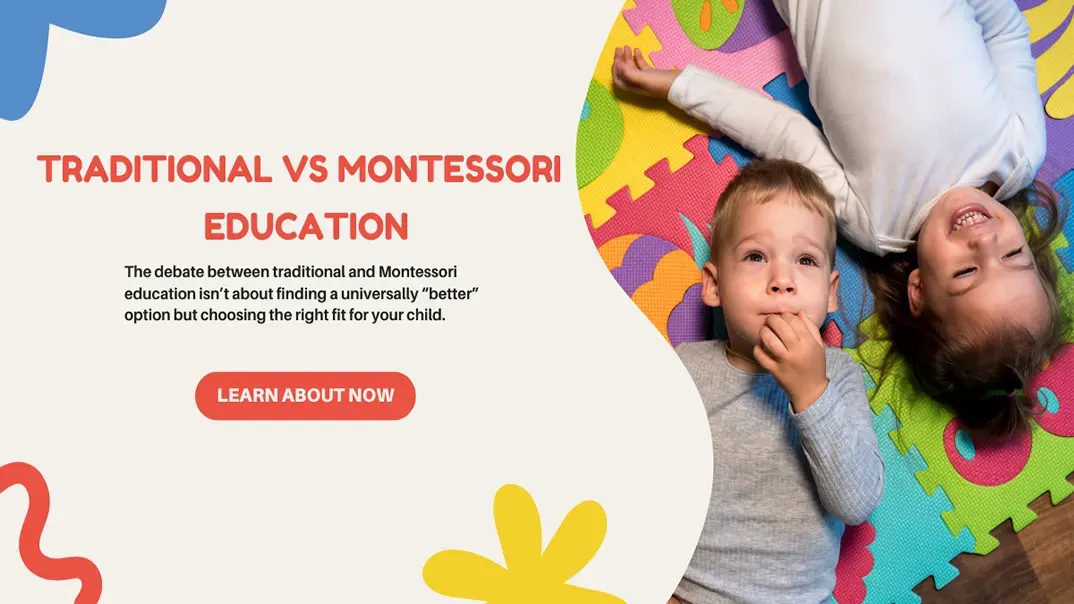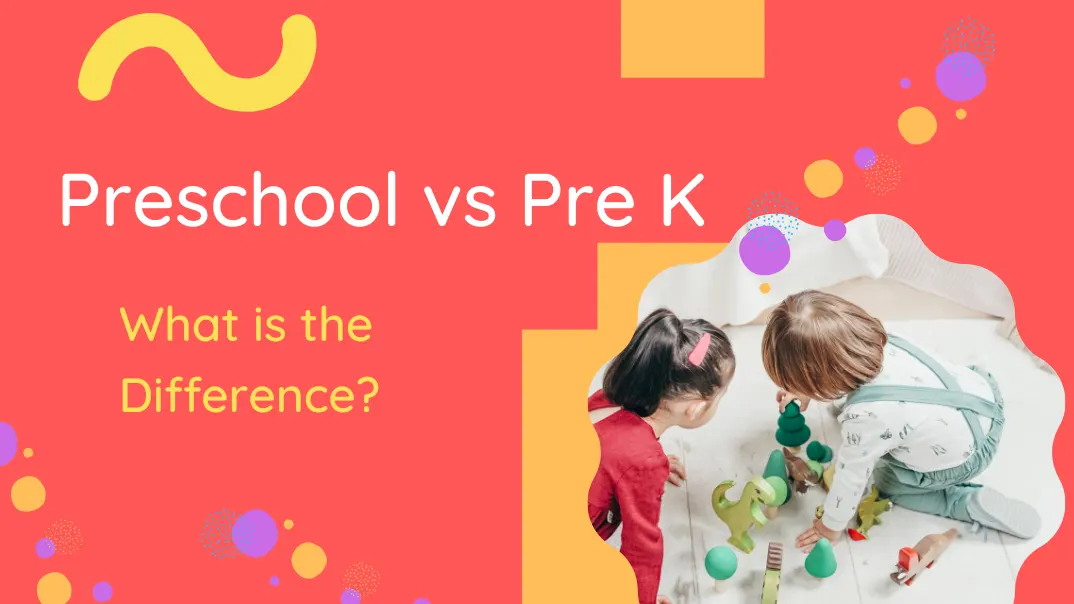The Reggio Emilia Approach is a transformative educational philosophy that places creativity, exploration, and joy at the heart of early education.
Conventional approaches often focus on rigid structures, limiting opportunities for imagination and exploration. Creativity and emotional intelligence are more important than ever, and the Reggio Emilia Approach stimulates children’s natural curiosity and fosters a passion for learning in an educational framework.
In this post, we’ll explore the core features and principles of the Reggio Emilia Approach, understand how it compares to other methods like Montessori, and discuss its advantages and challenges in the modern educational landscape.
What is the Reggio Emilia Approach?
The Reggio Emilia Approach is an innovative educational philosophy that centers on the idea that children are competent, capable, and curious learners. Originating in Italy after World War II, this approach focuses on child-driven learning, where children’s questions, interests, and ideas form the basis of the educational process. Unlike traditional methods emphasizing a fixed curriculum, the Reggio Emilia Approach emphasizes creativity, hands-on learning, and collaboration. The philosophy is deeply rooted in respect for the child’s voice and agency in the learning process, making it a more individualized and flexible approach to early childhood education.
At the core of this approach, educators believe that children learn best when they are active participants in their learning environment.
The child’s natural curiosity drives the curriculum, and teachers act as facilitators who support and guide this discovery process. This method encourages creativity and critical thinking, offering a unique opportunity for children to develop holistically.
If you’re curious about how the Reggio Emilia Approach works in practice and its benefits, keep reading to learn more about its origin, key features, and principles.
The Origin of the Reggio Emilia Approach
The Reggio Emilia Approach was developed in Reggio Emilia, Italy, after World War II. It was founded by educators, parents, and community members who sought to create an educational system fostering creativity, independence, and a sense of responsibility in children. Loris Malaguzzi, an Italian educator, is often credited with being the key figure behind the development of the Reggio Emilia philosophy. He believed that children were not empty vessels to be filled with knowledge but active participants in their learning process.
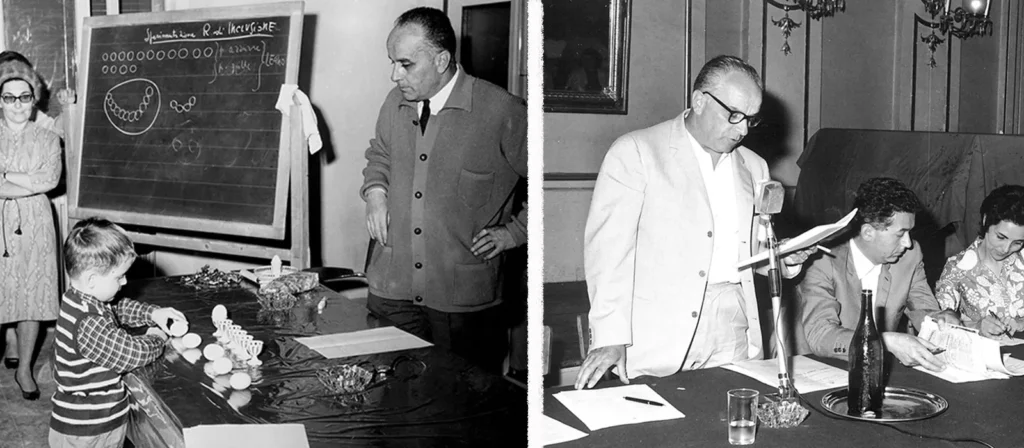
This educational philosophy grew out of a desire to empower children by valuing their opinions, their unique ways of expressing themselves, and their ability to contribute meaningfully to their communities.
In the 1960s, the approach gained international recognition, and since then, Reggio Emilia has influenced educational practices worldwide, focusing on a holistic, child-centered approach to learning.
Today, Reggio Emilia-inspired programs are found in schools across the globe, continuing to inspire educators and parents to prioritize creativity and child autonomy.
The Main Features of the Reggio Emilia Approach
The Reggio Emilia Approach is characterized by several distinct features that set it apart from traditional educational models. These features work together to create a learning environment that fosters creativity, collaboration, and critical thinking.
1. Project-Based Learning
At the heart of the Reggio Emilia Approach is project-based learning. This method emphasizes deep exploration of a particular topic over an extended period, allowing children to investigate their interests through various mediums, such as art, science, literature, and more. The focus is not on memorization but on the process of inquiry and discovery. For example, a child might begin a project on plants by examining seeds, discussing their observations, and ultimately planting their garden. Through this hands-on experience, children learn about the subject and develop problem-solving and investigative skills.
Transform Your Classroom with Custom Furniture Solutions
2. The Environment as the Third Teacher
In Reggio Emilia’s classrooms, the environment is seen as the third teacher. Classrooms are carefully designed to be aesthetically pleasing, engaging, and inspiring. Every space has natural light, open areas, and materials encouraging interaction, creativity, and exploration. Teachers understand that the physical environment plays a crucial role in shaping a child’s learning experience, and they aim to create a space where children feel empowered to express their thoughts and ideas freely.
3. Expressive Experiences
The Reggio Emilia Approach strongly emphasizes expressive experiences, allowing children to communicate their ideas in multiple ways. Art, music, movement, and dramatic play are not separate subjects but integral parts of a child’s overall learning. Children are encouraged to use these different forms of expression to communicate their thoughts, feelings, and discoveries, allowing them to explore and understand their world more personally and meaningfully.
4. Collaboration, Dialogue, and Exchange of Ideas

Collaboration is at the core of the Reggio Emilia Approach. Children are encouraged to work together, share their ideas, and engage in dialogue with their peers. This collaborative process helps them develop critical social skills, such as negotiation, cooperation, and empathy. Teachers facilitate these interactions by listening actively, asking questions, and guiding discussions that challenge children to think more deeply about the world around them.
5. The 100 Languages of Children
One of the most well-known aspects of the Reggio Emilia Approach is the concept of the “100 languages of children.” This idea suggests that children have many ways of expressing their thoughts and ideas and can take many forms—through drawing, painting, sculpture, storytelling, or even physical movement. By embracing all these “languages,” educators provide a space where children can communicate their experiences and knowledge in diverse and meaningful ways.
The Four Principles of the Reggio Emilia Approach
The Reggio Emilia Approach is grounded in four key principles that shape the educational philosophy and guide teaching practices.
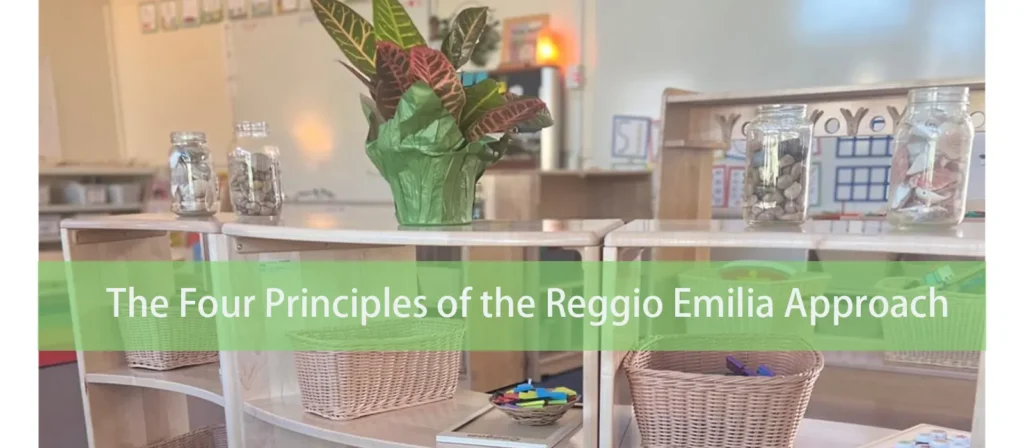
1. Emerging Curriculum
The curriculum is emergent in the Reggio Emilia Approach, which evolves based on the children’s interests, questions, and ideas. Rather than following a predetermined set of lessons, teachers observe and listen to children to identify the topics they are curious about and create learning experiences based on these interests. The curriculum is flexible and dynamic, adjusting as children’s ideas and inquiries develop.
2. Projects
As mentioned earlier, projects are a central component of the Reggio Emilia philosophy. These long-term, in-depth studies allow children to explore a topic from multiple angles, developing a deep understanding of the subject. Teachers provide resources, materials, and support, but the children’s interests lead the project’s direction. This hands-on, exploratory approach promotes critical thinking and creative problem-solving.
Transform Your Classroom with Custom Furniture Solutions
3. Representative Development
The concept of representative development refers to the idea that children can express their thoughts and ideas in many ways, not just through words. Through art, drawing, sculpture, and other creative forms, children can represent their understanding of the world around them. These representations are essential to learning, offering insight into children’s thoughts, feelings, and understanding.
4. Collaboration
Collaboration is encouraged not just among children but also between teachers, parents, and the community. The approach fosters a partnership between all involved in a child’s education, with open communication and shared responsibility. Teachers and parents work together to support the child’s development, while the community actively enriches the curriculum through shared resources and experiences.
What Age Group Is Reggio Emilia Suitable For?
The Reggio Emilia Approach is primarily designed for children aged 3 to 6, but its principles can be adapted for all ages. The approach works best in early childhood settings, where children still develop foundational skills like communication, social interaction, and problem-solving. However, many schools and educators have adapted Reggio Emilia-inspired methods for older children, emphasizing creativity, exploration, and collaboration in broader educational contexts.
What Do Reggio Emilia Teachers Need?
Teachers in a Reggio Emilia preschool or classroom must deeply understand the philosophy and principles that guide the approach. They need to be:
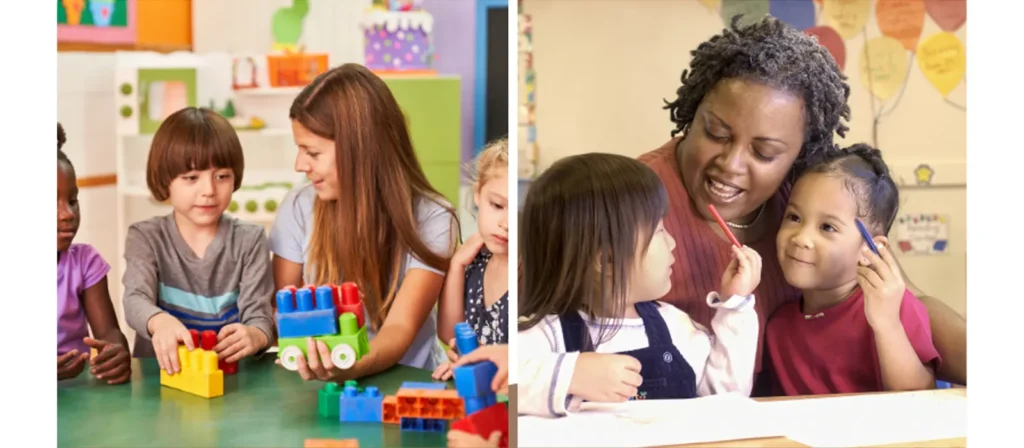
- Active listeners: who pay attention to the ideas and interests of the children.
- Facilitators of learning: encouraging inquiry and exploration without dictating what children should learn.
- Collaborators: work closely with children and parents to meet the child’s developmental needs.
- Reflective practitioners: continuously assessing and documenting the children’s progress and adjusting the learning environment accordingly.
Comparison Between the Reggio Emilia Approach and the Montessori Method
The Reggio Emilia Approach and the Montessori method focus on child-centered education, but their philosophies and practices differ significantly. Below is a detailed table comparing the two approaches:
| Feature | Reggio Emilia Approach | Montessori Method |
|---|---|---|
| Educational Philosophy | Designed to inspire creativity with open spaces and materials for collaborative projects. | Emphasizes independence and self-directed learning through structured activities and materials. |
| Role of the Teacher | Acts as a guide and co-learner, documenting children’s progress and supporting their inquiries. | Serves as an observer, introducing materials and stepping back for the child to learn. |
| Classroom Environment | Designed to inspire creativity, with open spaces and materials for collaborative projects. | Structured and orderly, with specific areas for different activities and materials. |
| Curriculum | Emerges based on children’s interests and ideas. | Pre-set curriculum with materials designed for sequential skill development. |
| Learning Style | Encourages group collaboration, discussion, and exploration. | Promotes independent, solitary learning with limited group activities. |
| Parental Involvement | Highly involved, considered co-educators in the child’s learning journey. | Limited parental involvement; focuses more on the teacher-student dynamic. |
| Assessment | Relies on documentation, observation, and projects to understand learning. | Uses structured assessments and milestones to gauge development. |
Both approaches are effective, but the choice depends on the child’s personality and learning preferences.
Transform Your Classroom with Custom Furniture Solutions
The Advantages of the Reggio Emilia Method
The Reggio Emilia Approach offers a range of benefits, making it a powerful tool for fostering creativity and collaboration in young learners. Here are some of its most impactful advantages:
1. Encourages Creativity and Expression
One of the standout benefits of the Reggio Emilia Approach is its focus on creativity. By emphasizing the “100 languages of children,” this method allows kids to express themselves through various mediums such as art, storytelling, music, and play. This diversity ensures that every child can communicate and learn in ways that resonate with them.
2. Nurtures Collaboration and Social Skills
The Reggio Emilia Approach places collaboration at its core. Group projects and shared activities teach children essential teamwork, communication, and conflict-resolution skills. These social competencies are valuable in childhood and lay a strong foundation for adult life.
3. Promotes Child-Centered Learning
Children in Reggio Emilia-inspired classrooms are encouraged to lead their learning. Their interests and questions guide the curriculum, empowering them to take ownership of their education. This approach builds confidence and fosters a lifelong love of learning.
4. Strengthens Parent-Teacher Relationships
Unlike other methods, the Reggio Emilia educational approach sees parents as co-educators. Regular communication, collaborative projects, and shared goals ensure that children receive consistent support at home and school.
The Disadvantages of the Reggio Emilia Method
While the Reggio Emilia Approach has many benefits, it has challenges. Here are some of the key drawbacks to consider:

1. Requires Extensive Resources
The Reggio Emilia classroom environment is a critical component of the method, requiring open spaces, natural materials, and diverse resources. Schools with limited budgets may struggle to implement these features effectively.
2. Demands Highly Trained Educators
Teachers in a Reggio Emilia classroom must be skilled in observation, documentation, and flexible curriculum development. Finding and training educators who align with this philosophy can be challenging, particularly in regions where traditional methods dominate.
3. May Be Harder to Scale
Because the Reggio Emilia Approach relies on small group interactions and individualized learning, it may not be feasible in larger classroom settings or public school systems with rigid curriculum structures.
4. Not Ideal for Every Child
While the Reggio Emilia educational approach fosters creativity, some children may benefit from more structure and guidance, as offered by the Montessori method or traditional classrooms.
Reggio Emilia Classroom Environment
The Reggio Emilia Approach classroom environment is often described as the “third teacher” because of its critical role in shaping a child’s learning experience.
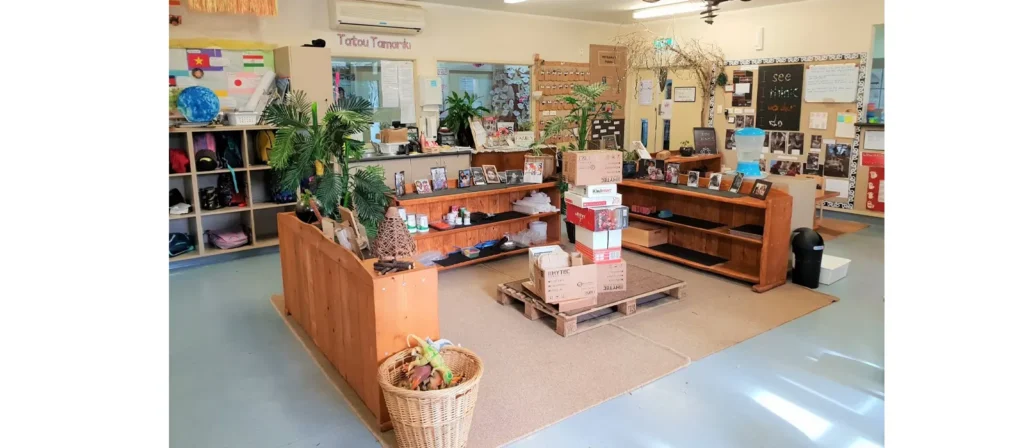
Natural Materials and Aesthetic Appeal
Classrooms are designed with natural materials like wood, clay, and fabric. Colors are soft and neutral, creating a calming atmosphere that inspires creativity. Materials are arranged thoughtfully, inviting children to explore and engage with them independently.
Open and Flexible Layout
The Reggio Emilia Approach to classroom design emphasizes open spaces, encouraging collaboration and movement. Furniture is lightweight and movable, allowing the layout to adapt to different activities. Learning stations are often centered around classroom themes like art, science, or construction.
Interactive and Child-Centered Displays
Children’s artwork and projects are displayed prominently, reinforcing the value of their contributions. Interactive boards and reflective surfaces invite children to observe their surroundings and think critically.
How to Integrate the Reggio Emilia Education Concept into the Classroom
Integrating the Reggio Emilia educational approach into your classroom may seem daunting, but it’s achievable with the right mindset and preparation. Here are actionable steps to get started:
1. Observe and Document
Begin by observing your students closely. Please pay attention to their interests, questions, and interactions. Document these observations through notes, photos, and recordings to gain insights into their thought processes and guide your lesson planning.
2. Embrace Flexible Curriculum Development
Instead of following a rigid lesson plan, allow your curriculum to evolve based on the children’s interests. For example, if your students show interest in animals, you might design projects around habitats, biology, and storytelling featuring animals.
3. Create a Reggio Emilia Classroom Environment
Transform your classroom into a space that fosters exploration and creativity. Use natural materials, design flexible spaces for group activities, and ensure all materials are accessible to children. Encourage open-ended play and experimentation.
4. Facilitate Collaboration and Play-Based Learning
Introduce group projects and collaborative activities that allow students to explore concepts together. Incorporate Reggio Emilia Approach activities, such as building with loose parts, painting, and storytelling, to support play-based learning and critical thinking.
5. Partner with Parents
Build strong relationships with parents by involving them in classroom activities and maintaining regular communication. Share your observations and collaborate on projects that extend learning beyond the classroom.
Conclusion
The Reggio Emilia Approach is a transformative educational philosophy prioritizing creativity, collaboration, and child-centered learning. While it may require additional resources and training, its benefits far outweigh the challenges, offering a holistic and dynamic approach to education. Whether you’re an educator looking to enhance your teaching methods or a parent seeking the best approach for your child, integrating the Reggio Emilia educational approach can make a profound difference.

